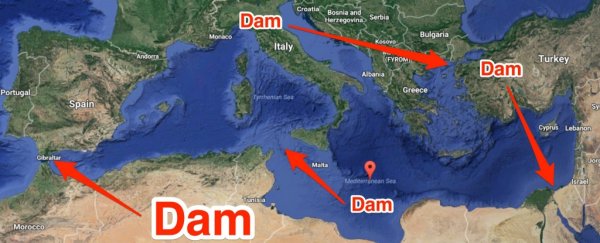Sometimes the world seems normal and boring. Other times, not so much.
Sometimes, you realise it's a place where mad sci - er, architects spend decades trying to implement kooky plans to drain the Mediterranean Sea and join the continents of Europe and Africa.
Atlas Obscura writer Toon Lambrechts dug up this fascinating, discarded, real-life idea, which makes an appearance in the 1962 Phillip K. Dick novel The Man in the High Castle (the book that inspired the Amazon TV series of the same name).
As Lambrechts explains, the actual plan to drain the Mediterranean wasn't a Nazi idea at all - though its designer was happy to pitch it to them once they took power.
German architect Herman Sörgel first proposed the scheme in 1929, then popularised it three years later in his book Atlantropa. (Atlantropa was his name for the post-drainage Euro-African landscape.)
Lambrechts explains how it would have worked:
"Not hampered by any sense of reality or modesty, Sörgel's Atlantropa design envisioned three gigantic dams which dwarf contemporary superstructures like China's Three Gorges Dam.
The biggest barrage would be built across the Straights of Gibraltar between Spain and Morocco, separating the Mediterranean from the Atlantic Ocean. A second dam would block the Dardanelles and shut off the Black Sea.
As if that were not enough, a third dam would stretch out between Sicily and Tunisia, cutting the Mediterranean in two, with different water levels on either side."
The result wouldn't have been entirely dry land between the continents, but a tremendous amount of hydroelectric power and plenty of new land to cultivate.
Sörgel apparently thought the project, conceived after World War I, would unite European nations in common purpose and ease post-war tensions.
Lambrechts writes that the German public and media loved the idea, though the Nazis rejected it. Even though he was never successful, Sörgel continued to push for Anlantropa until his death in 1952.
Read more about it at Atlas Obscura.
This article was originally published by Business Insider.
